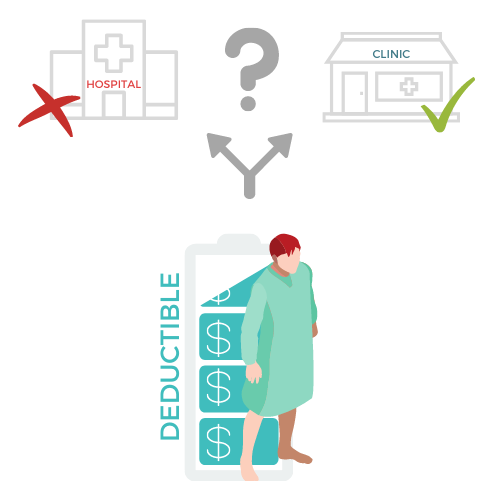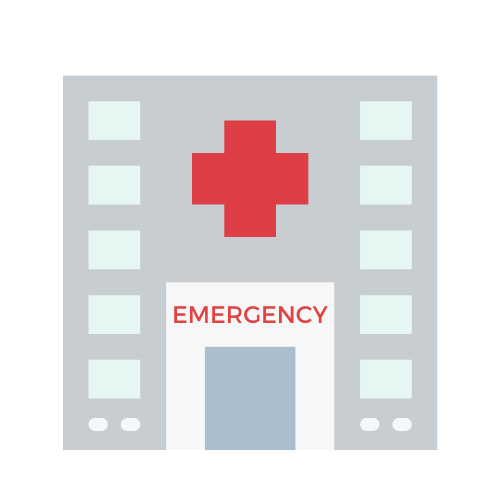


De-adopting Low-Value Care - Evidence, Eminence, and Economics
Low-value care accounts for an estimated $67 billion in US spending annually. Despite a growing body of research cataloguing these services, the US is slow to abandon them. Recent JAMA Viewpoint article highlights the three forces that govern de-adoption of low-value care. Learn more about how this framework can be applied to identify policies that could speed up de-adoption.
Choosing Wisely: 10 Practices to Stop—or Adopt—to Reduce Overuse in Health Care
Choosing Wisely – a health care initiative that highlights screening and testing recommendations from specialty societies in an effort to encourage high-value, effective health care decisions and avoid overuse – published 10 evidence-based recommendations that can help avoid unnecessary testing and interventions. Learn more here.

Do People Choose Wisely After Satisfying Health Plan Deductibles? Evidence From the Use of Low-Value Health Care Services
High health plan deductibles are an increasingly common strategy for implementing cost-sharing and teaching members to “choose wisely” when it comes to health care services they use. This recently published EBRI article takes a closer look at what happens after the deductible is met. Findings that suggest additional strategies may be needed to adequately reduce use of low-value care.

The Impact of Global Budget Payment Reform on Systemic Overuse in Maryland
In 2014, an effort to curb overuse of health care services and control hospital use and spending, Maryland instituted a global budget for inpatient and outpatient hospital services. In this study, authors investigate whether this budget program was associated with a reduction in medical overuse.

Theories, Models, and Frameworks for De-implementation of Low-Value Care: A Scoping Review of the Literature
In a recent literature review, authors assert that achieving true evidence-based practice depends not only on implementation of evidence-based interventions, but also the de-implementation of interventions that are not evidence-based. Read more here.

High‐Deductible Health Plans and Low‐Value Imaging in the Emergency Department
In recent years, HDHPs have become a popular tool used to control healthcare costs and reduce wasteful medical spending by giving patients “skin in the game”. In this study, researchers take a closer look at whether enrollment in an HDHP affects patient decisions during clinical encounters in the emergency department.

Cigna Becomes Third Major Payer to Restrict MRIs, CT Scans at Hospitals
In August, Cigna announced that they will restrict coverage for advanced imaging, stating that they are aiming to “provide coverage for (our) customers to get the right care at the right place and at the right time”. As the nation’s fourth largest insurer by membership, this policy change will affect nearly 17 million people. Read more here.

Can You Get Trump's COVID Care?
“Much of health care involves established, routine use of medical services for chronic conditions or prevention,” Eve A. Kerr, professor of general medicine at the University of Michigan IHPI, and colleagues wrote in JAMA Internal Medicine. “Stopping these services when the evidence changes or if the benefits no longer outweigh the risks is essential.” Read more here.

Experts Focus on More Important Recommendations to Scale Back Care for Chronic Conditions
“Much of health care involves established, routine use of medical services for chronic conditions or prevention,” Eve A. Kerr, professor of general medicine at the University of Michigan IHPI, and colleagues wrote in JAMA Internal Medicine. “Stopping these services when the evidence changes or if the benefits no longer outweigh the risks is essential.” Read more here.

Establishing A Value-Based ‘New Normal’ For Telehealth
On Thursday, October 8, 2020, healthcare stakeholders joined the Research Consortium for Health Care Value Assessment for a webinar where leading health policy experts addressed how to enhance the efficiency of health care spending during and after the COVID-19 pandemic. In this article, second of the 8-part series published the same day, Christina Cutter, Nicholas Berlin, and Mark Fendrick of the University of Michigan assert that the post-pandemic role of telehealth will be complex and consequential.

Comparative Effectiveness of Generic vs Brand-Name Levothyroxine in Achieving Normal Thyrotropin Levels
Studies show that when both generic and brand-name drugs are available, generics are generally selected 97% of the time. When it comes to levothyroxine, however, 25% of scripts filled were for brand-name products. In this study, researchers aim to compare the effectiveness of generic vs. brand name Levothyroxine. Read more.


